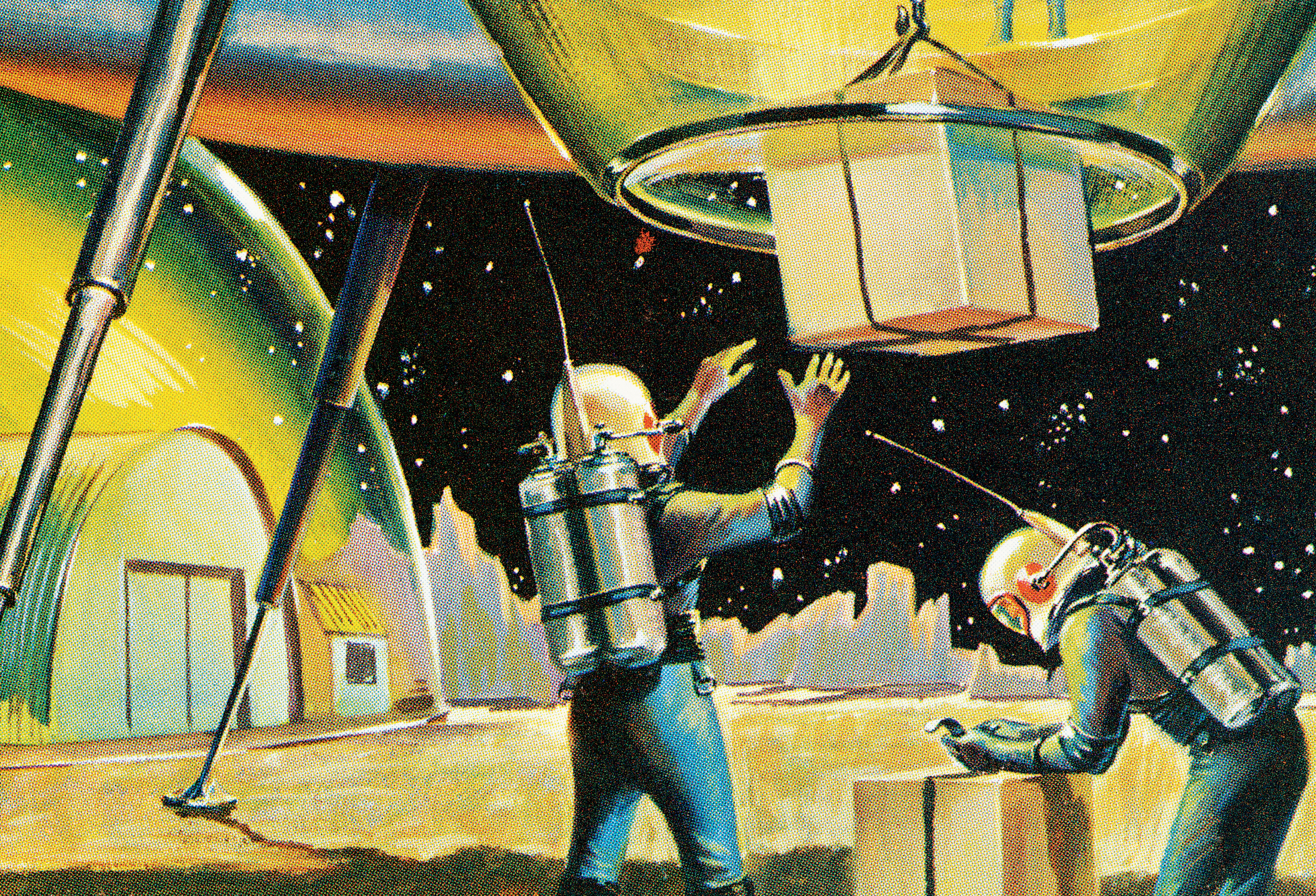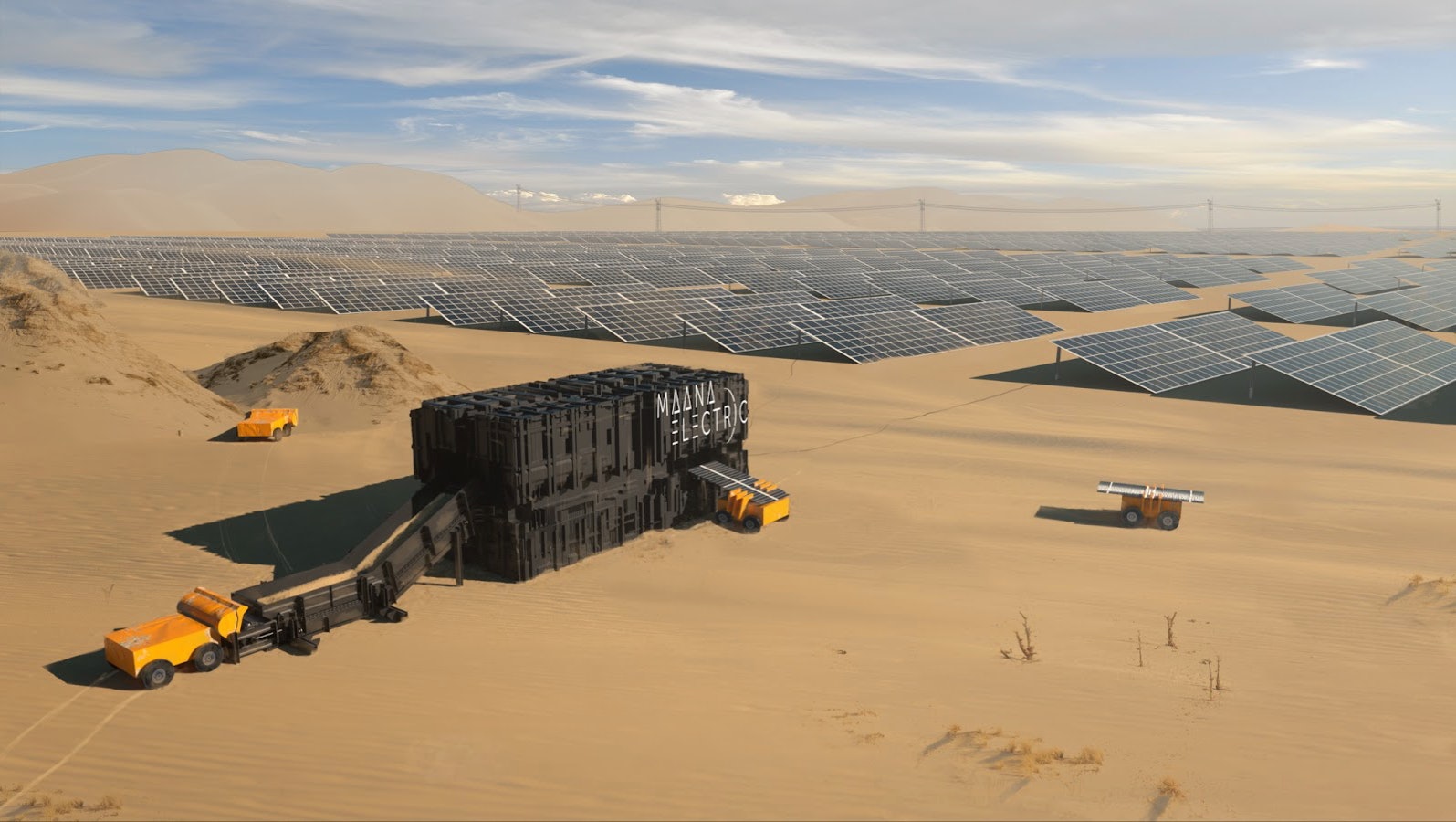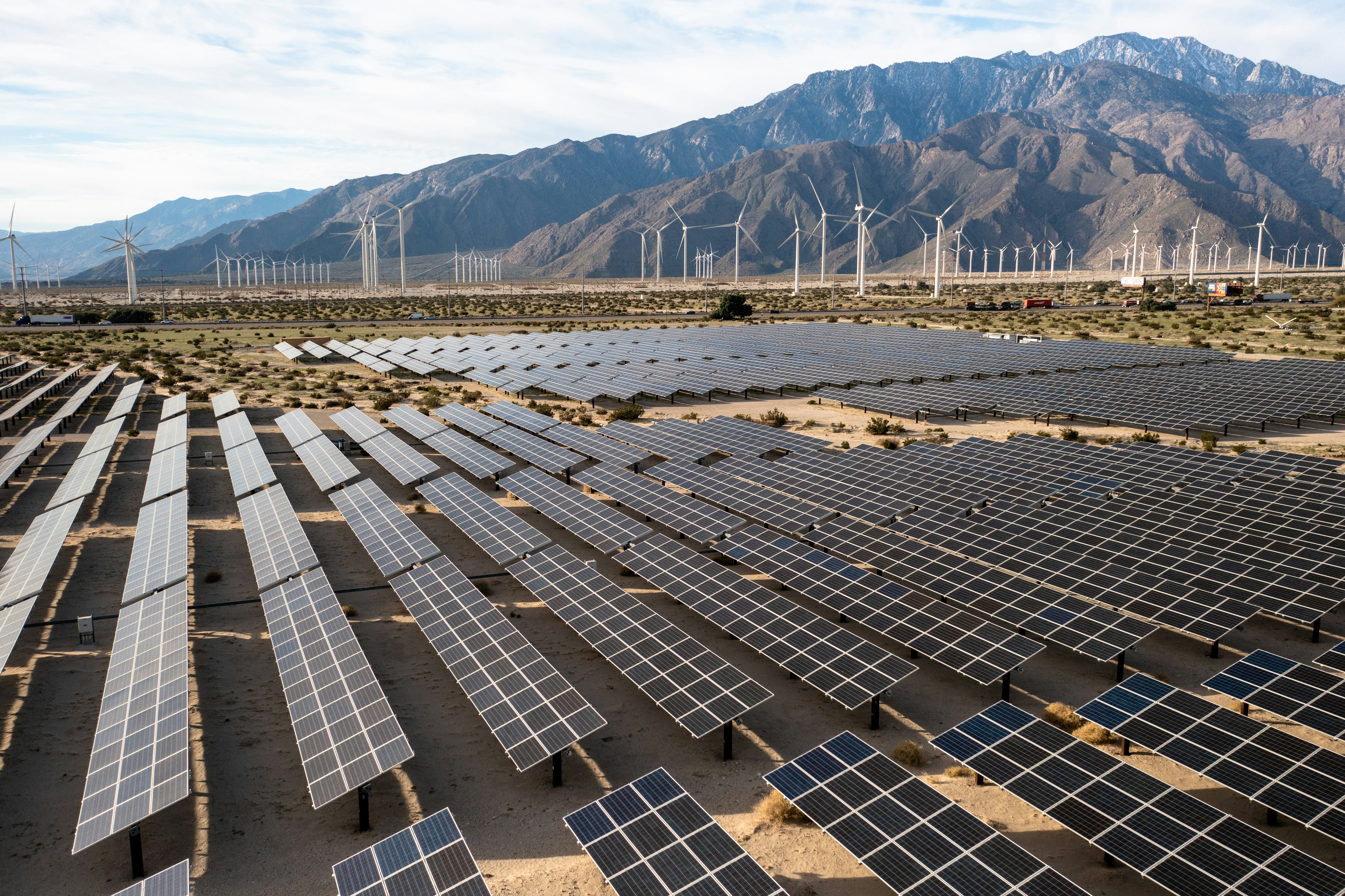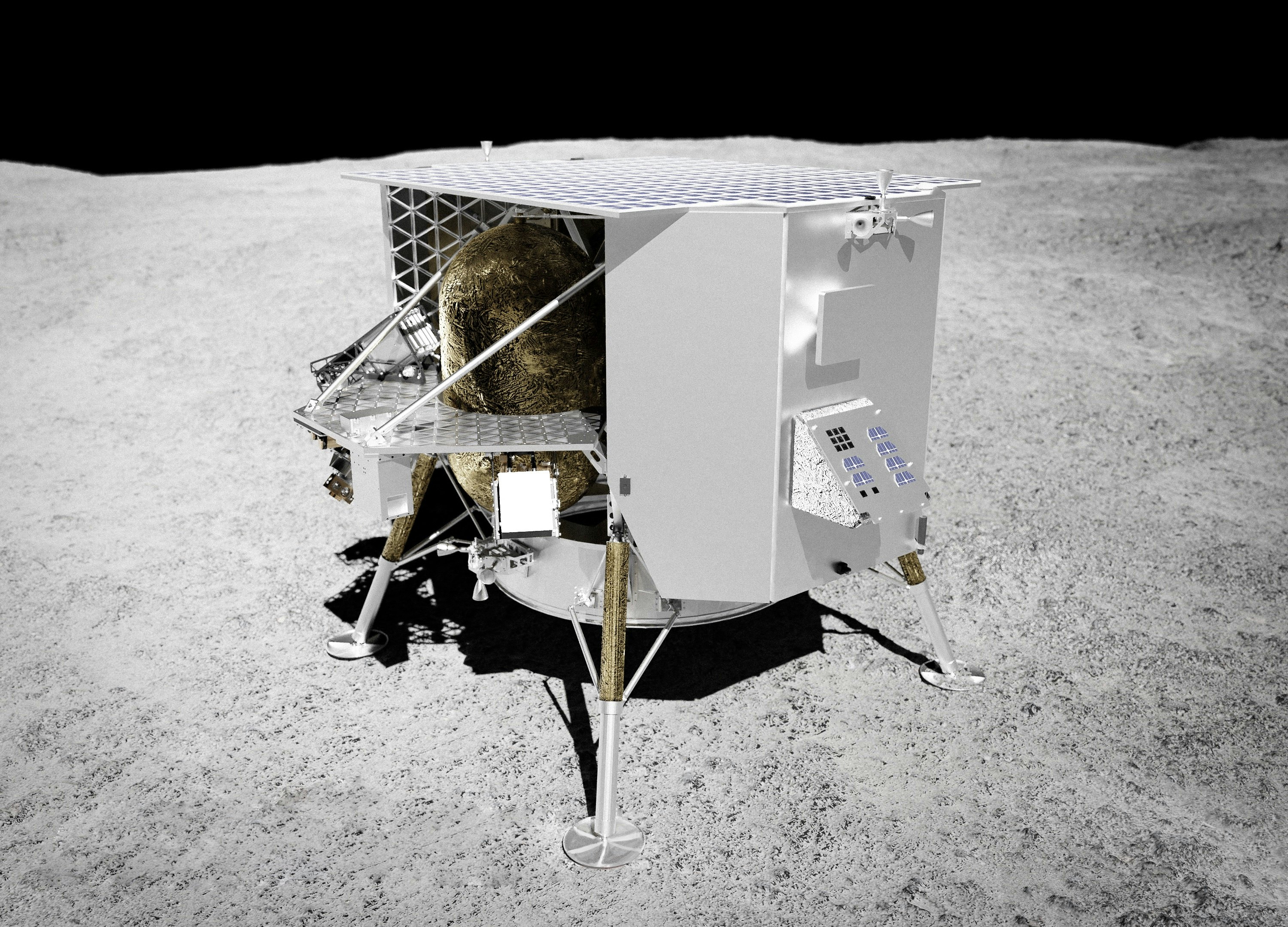
Somewhere out in the desert, a giant black box the size of six shipping containers sucks in sand and spits out solar panels.
It might sound like a scene from Star Wars, Dune, or another sci-fi fantasy, but Maana Electric and its portable TerraBox factory are completely real. The only problem, the solar panels it makes are inefficient — for now.
Maana Electric’s system produces panels with an efficiency of about 12 percent (the exact process is confidential). Solar price comparison site EnergySage tells buyers to expect 15 to 20 percent efficiency. Maana Electric CEO Joost van Oorschot admits his product is still a work in progress.
“It’s a pilot system,” van Oorschot says. “It’s meant to showcase the technology and prove that it works producing solar panels from desert sand.”
Despite its current shortfallings, the Luxembourg-based company (with offices in the Netherlands and Dubai) presents an ideal irresistible to clean energy enthusiasts — and space exploration agencies looking to build settlements on the Moon.

In 2021, Luxembourg’s economic minister Franz Fayot visited Maana Electric, and the country’s largest daily newspaper covered its ambitious plans to one day build solar panels on the Moon. The European Space Agency has even awarded Maana Electric a multi-million dollar contract to get their TerraBox factory working well.
HORIZONS is a series on the innovations of today that will shape the world of tomorrow. This is an adapted version of the April 21 edition and part of Inverse’s Earth Day issue: How to Save the Earth.
“TerraBox is the perfect illustration of technological breakthrough which has both terrestrial and space applications,” Marc Serres, the CEO of Luxembourg Space Agency, says in a May 2021 statement. The contract is part of the Luxembourg National Space program, supported by the LSA and the ESA.
“Maana Electric aims to be the utility company of the Solar System,” is how the LSA website describes the company.
If they and van Oorschot are correct, Maana Electric could solve our energy problems on Earth and in space, but we should take their claims with a grain of salt.
Solar panels for uncertain times

The benefits of TerraBox on Earth are both numerous and pretty obvious.
Maana’s system produces panels wherever they are needed. That means they don’t have to ship across the world, saving on costs, reducing the reliance on China as the biggest solar-panel producer, and reducing the risk of damage during transit.
The war in Ukraine has added more impetus to Maana’s ultimate goal, Van Oorschot says — Russia’s brutal invasion has caused prices to jump in supplies for energy generation, including solar, and caused energy prices to rise overall.
“We see that local production becomes more and more relevant,” van Oorschot says.
“We can produce electricity from our own panels, so our economics doesn’t change so much,” van Oorschot says. Although the box doesn’t have panels on the top, van Oorschot claims that it will have produced enough panels to cover the electricity required for the box after three months. “Besides that, the fact that energy prices have increased means that the payback period for solar parks is dropping like crazy.”
“That plays into our hands because we don’t have that dependence on supply chains the way the traditional market has,” he says.
As a result, van Oorschot claims Maana can sell its solar electricity for 20 to 30 percent cheaper than competitors on a price-per-watt basis.
The panels are also easily recycled, van Oorschot says. Because of their simple design, they can be efficiently pulled apart, and any parts that can be recycled are easily accessible. At the same time, the box production process generates less carbon dioxide than a typical solar-panel production process.
“We shouldn't forget about the fact that we are also doing damage to the environment by producing things that ultimately might save the environment,” he says. Ultimately, there are still environmental costs, but van Oorschot argues the clean-energy generated offsets these costs.
How the TerraBox works
The machines, known as TerraBoxes, suck in sand — specifically sand that contains quartz. The system has a novel method of extracting the quartz from the sand — details are scarce, and van Oorschot described the machine’s interior in a 2021 interview with Inverse as “the sensitive part.” It produces almost everything a panel needs — silicon wafers, glass — except for the wiring.
The whole box can fit into six 20-foot shipping containers and then assembled on site. It weighs around 220,000 pounds — about as heavy as a blue whale — and can produce 20 to 25 panels per day. That amounts to one megawatt-worth of panels per year. All you need to do is load in one cubic meter, or 35 cubic feet, of sand per day. At about 1.6 tons, it’s about the same as shoveling a car’s worth of sand a day.
After two to three months, the box will have spat out enough panels to power itself. Then, each subsequent new panel can be used to power something else.
“A country like Namibia, for example — if you send 10 TerraBoxes there and they produce for their 10-year lifetime, you can completely transition a country like that to renewable energy,” van Oorschot says.
“The objective is to be able to help people switch to renewables.”
While the box requires 35 cubic feet of sand per day, van Oorschot notes in a 2021 interview with Inverse that a Maana Electric partner could simplify the process by filling a silo next to the box. That would mean the partner only has to add more sand once per month.
The machine is designed to produce panels for 10 years, but it could go longer. That would mean that the box would produce 10 megawatts of solar panels throughout its lifetime.
One significant benefit of using the box over buying panels is that, over its lifetime, the box requires fewer shipping resources because it operates in situ. For a company aiming to reduce carbon emissions, fewer ships sending out fumes is a welcome benefit.
A future box design will produce ten times more panel capacity per year. That means the new box would make enough panels per year to harvest 10 megawatts of energy.
The upgraded box means even more carbon emissions saved. Because of the increased capacity, the client would save on the amount of shipping space versus ordering panels in a much faster period. Where the one-megawatt box would start saving on shipping space in one year, the 10-megawatt box would start saving on space in two to three months.
The company is targeting the design process for the 10-megawatt box in the coming months. The goal is to build the first one by 2024, which van Oorschot describes as “realistic.”
Maana basically functions as a utility— you can’t buy a TerraBox for your personal use. Rather, clients pay Maana for the panels at the end, priced by the watt. There are other fees to cover getting the box to the right place.
“If we are successful with proving our production processes and developing the 10-megawatt TerraBox, we want to produce hundreds of these [...], and we want to produce as many solar panels as we can,” he says.
“The objective is to be able to help people switch to renewables.”
To the Moon

Beyond Earth, however, Maana wants to send TerraBoxes to the Moon. There, they would use lunar regolith — what NASA defines as the layer of debris covering the Moon — to produce solar panels, build solar parks on the lunar surface to power human habitats, and transform Maana into the first space-based utility company.
“Maana Electric aims to be the utility company of the Solar System.”
It could help establish a permanent settlement on the Moon. In October 2021, famed ex-NASA engineer Homer Hickam told Inverse that a city on the Moon could support mining operations, bringing resources back down to Earth.
Like the International Space Station, a Moon city could also enable humans to complete scientific experiments and commercial research. SpaceX also claims that it could help Musk’s firm gain valuable experience to help it one day get to Mars — where it hopes to build a million-strong city by 2050.
But while cities on Mars and the Moon sound fantastic, they won’t last very long without electricity to run the residents’ equipment. Power on Earth can come from fossil fuels like coal and oil or renewable sources like hydroelectricity. Those, of course, won’t work in most other places.
One renewable source that all three have in common is where Maana could shine best — solar energy, beaming through space to hit the surfaces of the Moon and Mars. There’s a reason why the International Space Station famously orbits the Earth with giant solar panels stretching out to harvest the energy beaming down.
Private companies like SpaceX and government agencies like the ESA and NASA aim to build human settlements on the Moon in the next decade. Maana could help power those projects — that’s why the Luxembourg Space Agency is putting money into their developments.
Instead of launching solar panels into space or building them conventionally on the Moon, Maana could launch a TerraBox able to generate its solar electricity and set up a solar energy park for astronauts to live off.
While it is unclear how big a lunar TerraBox would be, the Earth-based one-megawatt TerraBox would require a rocket far more powerful than anything available today. SpaceX’s Starship, an under-development rocket that could lift 100 metric tons at once, could fit the bill.
On the horizon...
Van Oorschot claims that some of the company’s technologies are already reaching level four on NASA’s nine-stage technological readiness levels — stage four means the TerraBox works in a controlled, laboratory-like environment. Next, it needs to be tested and shown to work in a “representative environment,” i.e., a lunar-like desert on Earth.
If it all goes to plan, Maana aims to place a fully-functional TerraBox on the Moon by 2030. That would let Maana start popping out solar panels on the Moon to power future human habitats through the next decade.
It’s still up in the air which company or institution would take a TerraBox to the Moon, but Maana hopes that it could get a slot on a NASA and ESA lander. NASA aims to land the next humans on the Moon by 2025, using a Starship rocket from SpaceX to bring the humans to the surface.
“Let’s call [the 2030 goal] somewhere between optimistic and realistic,” van Oorschot says, describing an optimistic timeline as more like 2026 or 2027.
Before that, Maana Electric needs to put the finishing touches on the technology before industrializing in 2023. It could be the breakout moment before the company’s solar boxes light up the Moon and beyond.
HORIZONS is a series on the innovations of today that will shape the world of tomorrow. Forecast the future by signing up for our free HORIZONS newsletter.







